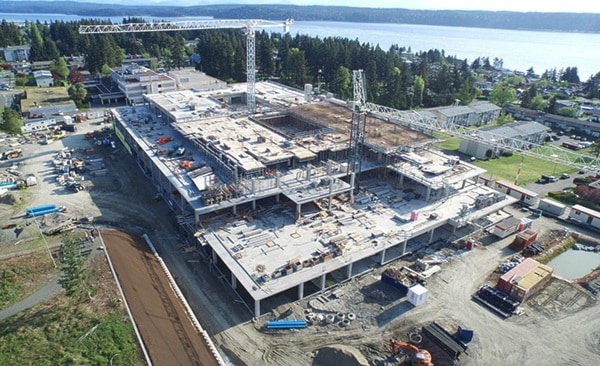There’s prosperity in diversity, or at least money to be made.
No, that’s not a line from the Capitalist’s Handbook on Multiculturism, more like the executive summary of Rich Island, Poor Island: Why They Drive Nicer Cars in Greater Victoria.
There is a sharp economic divide on Vancouver Island between the haves and the have-nots, at least in terms of the size of their paycheques.
The haves are huddled comfortably in the suburbs around Greater Victoria. Their less-wealthy cousins are carving out a living in the resource-based communities to the north and west.
According to statistics compiled by Island Health, three Island sub-regions have a median household income level above the B.C. median of $75,797.
Two of those areas — Sooke and the Western Communities at $84,394 and the Saanich Peninsula at $90,154 — have incomes that are significantly higher.
That contrasts sharply with Alberni-Tofino-Ucluelet, which has a median income of $58,856 and Cowichan Lake, which is even lower at $56,338.
The numbers date back to 2011 and the most recent census.
While raw incomes have likely climbed in the interim, the gaps between the communities are likely still very similar, according to Susan Mowbray, lead author of the 2015 State of the Island Economic Report.
The reason is pretty simple. Income is a reflection of jobs, and communities that offer jobs in a variety of fields are less susceptible to the ups and downs of the economy. And while the economy has improved for forestry and tourism, it hasn't improved enough.
“The economy around Victoria is very different than the rest of the Island. Beyond Nanaimo lacks diversity,” Mowbray said. “The more diversified your economy is, the better.”
Beyond the obvious jobs created directly and indirectly by government, Greater Victoria also offers a healthy tech industry, a Canadian forces base, two large hospitals and a major university.
Institutions like major hospitals, universities and military bases won’t make a local economy boom, but they are great stabilizers.
“The new hospitals in the north Island mean they won’t drop below a certain level,” Mowbray said.
Contrast that with the West Coast, which is basically a two-horse town. One horse, tourism, doesn’t pay well, while the other, forestry, is not the job-generator it once was.
“Based on the work we did in 2014-15 (the most depressed economy) was the Alberni area,” Mowbray said. “It’s so dependent on forestry and there’s not a large opportunity to expand. It’s looking at LNG, but there are a lot of obstacles.”
While comparing salaries makes for good coffee table conversation, Mowbray points out it should not be misconstrued as being synonymous with wealth.
“Income, in general, is a terrible indicator of wealth. A group that has low income may have wealth.”
That’s exactly what is happening in our golden-age capital of Parksville-Qualicum, which ranks low on the income scale, but also scores very well in poverty indictors like social assistance and unemployment.
Sooke and Saanich again ranked the best in those areas, with rural north Island communities joining the West Coast and Cowichan Lake at the opposite end of that scale.
Nearly half the households in Sooke and Saanich report incomes of more than $80,000. Meanwhile, one in five households in Lake Cowichan reported incomes of less than $20,000.
Mowbray said Vancouver Island can have some success in diversifying by attracting telecommuters, people who have built careers that allow them to work remotely and retirees. But overall, the region is doing well.
“Vancouver Island is a relatively affluent region,” she said.
Median household income by region
Saanich Peninsula $90,154
Sooke-Western Communities $84,394
Victoria-Esquimalt-Oak Bay $78,909
BC overall $75,797
Cowichan $74,049
Vancouver Island overall $73,358
Port Hardy-McNeill-Alice $70,687
Ladysmith-Chemainus $69,208
Comox Valley $68,371
Campbell River $67,933
Nanaimo $67,417
Tahsis-Zeballos-Gold River $65,593
Parksville-Qualicum $64,864
Alberni-Tofino-Ucluelet $58,856
Cowichan Lake $56,338
